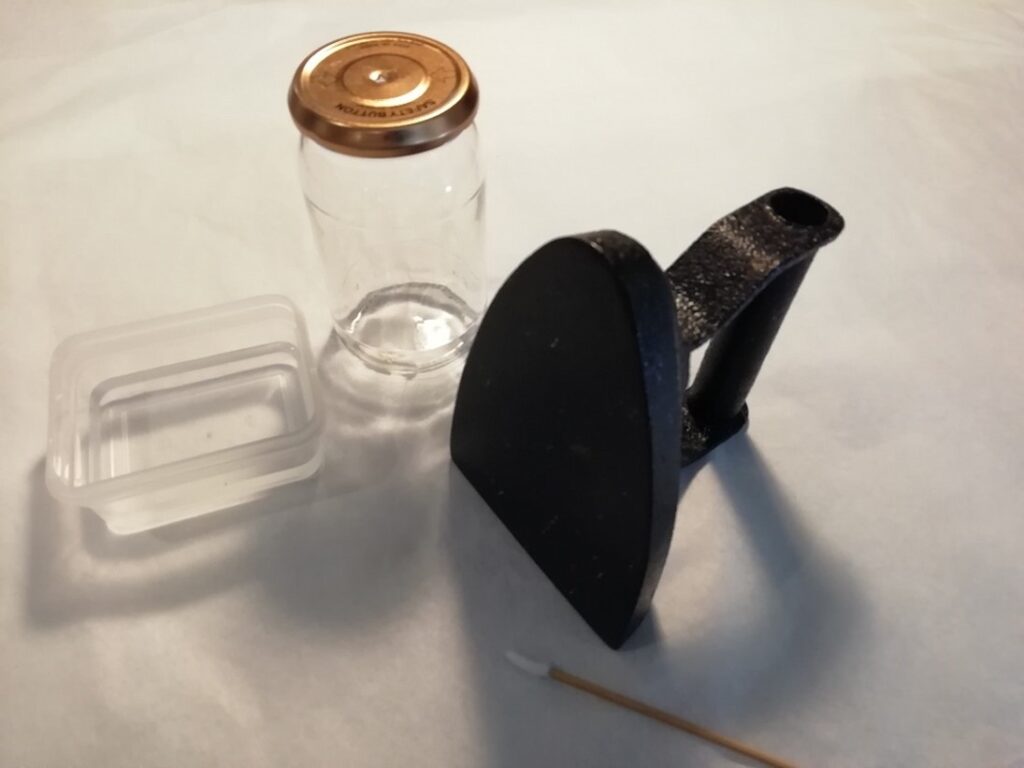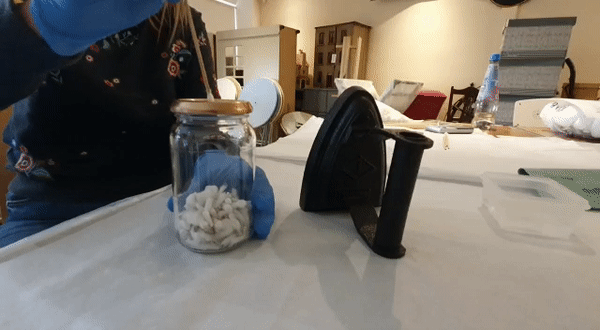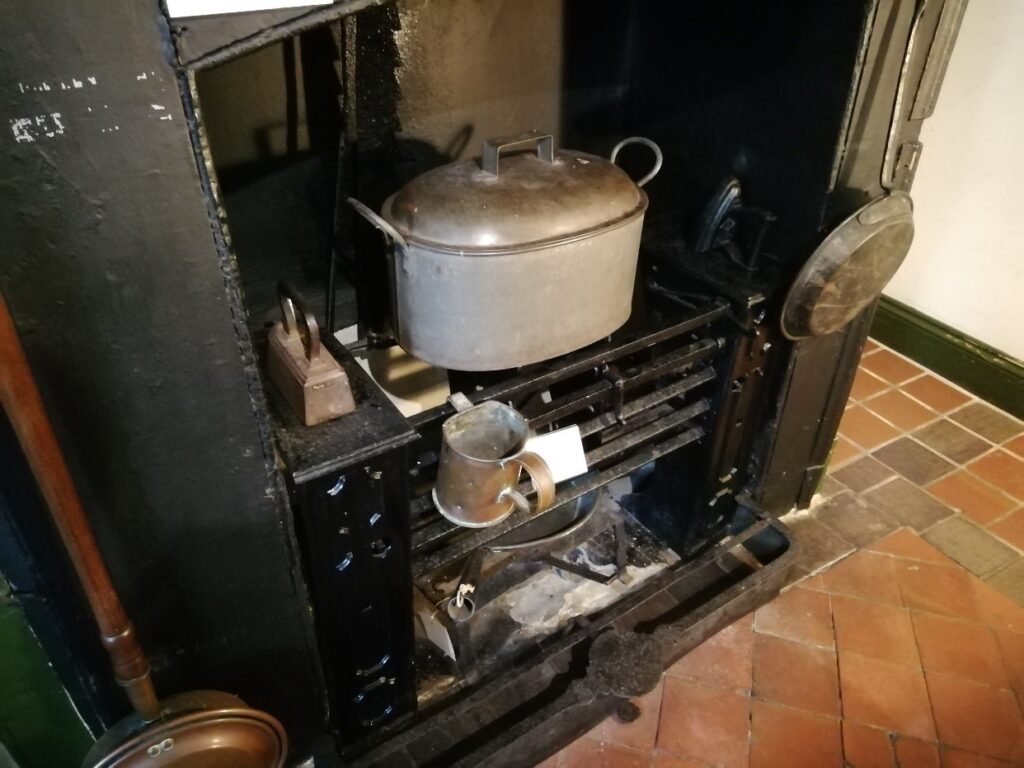A day in the life our Collections Officer, Aimee Flack.
Only six months into working with a 17th Century building and I’m quickly learning that the Museum of Cambridge is going to keep me on my toes! I wish I was referring to ghostly sightings, but no such luck. Instead, when carrying out a weekly building check in January I noticed a worrying amount of dirt had fallen on objects in one of our fireplaces.

As it’s a fireplace and I didn’t know what had fallen on the objects, I covered the area whilst we had samples tested. Tyvek is the perfect material for a cover, as it’s inert and breathable.
Once the results from the samples came back all clear that it wasn’t hazardous, I was then faced with the challenge of how to clean a boiling pot dating to around 1890 and two irons which we believe could date back to the 19th Century. Fortunately, I’m lucky enough to be able to consult the University of Cambridge Museums Regional Conservation Officer, Deborah Walton, who advised a method of cleaning where I was going to need cotton wool, wooden skewers, a jam jar (empty) with a hole pierced through the lid, paper towels, deionised water, lamp and gloves.

Once everything was ready, I set up my laptop next to my workspace and connected to Deborah through Zoom. When we were over our initial excitement to be working with the collections, Deborah reminded me to take photos of the fireplace and objects before starting. This is really important, so I know where to put everything back! I then chose the iron to start with and carefully carried it over to my workspace.

How do you carry out a test clean on a 19th Century iron you might ask? Well, the first step is to dip the end of the wooden skewer in the water, then wrap around a small amount of cotton wool on the tip, to create a cotton bud effect. There is a bit of a knack to this, and being out of practice, it took me a few goes to begin with.

The cotton wool is then ever so slightly dipped into the water again and dabbed on a paper towel to remove any excess. Then came the moment of truth, where I gently applied the cotton wool tip to a tiny part of the iron and held my breath in anticipation…

Happily, the dirt came off straight away but before moving onto the next area, this is where the jam jar with the hole in the lid comes into play. Through pushing the end of the skewer through the hole and then pulling back out again, the cotton wool comes straight off without having to touch it, leaving a clean skewer to create the next cotton bud.

With the same success on the next areas, I said a tentative goodbye to Deborah on Zoom knowing I could email her if came across any problems. However, other than a few stubborn areas, four hours later, we had three cleaned objects and fireplace, ready for when we re-open.

The Museum of Cambridge is proud to present the Museum Making project, in which we are looking for ‘Community Curators’ to help shape the direction the museum takes in the future. If you are interested in our collections and would like to find out more, head to the Museum Making webpage.
Aimee Flack is a trained Collections Officer, please do not use this blog as instructions to carry out at home.